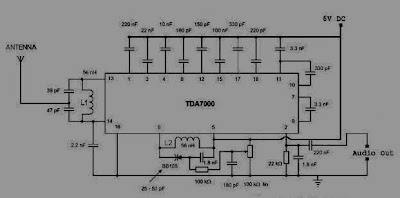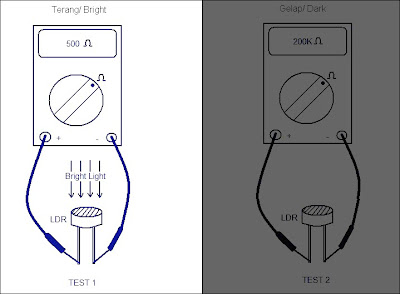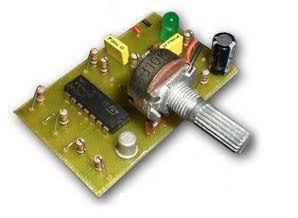
Note:
The switch S1 can be a slide type ON/OFF switch.
The POT R1 can be used to adjust the sensitivity of the circuit.
IC CS209A Description
The oscillator, along with an external LC network, provides controlled oscillations
where amplitude is highly dependent on the Q of the LC tank. During low Q conditions, a variable low-level feedback circuit provides drive to maintain oscillation. The peak demodulator senses the negative portion of the oscillator envelop and provides a demodulated waveform as input to the comparator. The comparator sets the states of the complementary outputs by comparing the input from the demodulator to an internal reference. External loads are required for the output pins. A transient suppression circuit is included to absorb negative transients

Absolute Maximum Ratings
Supply Voltage ................................................................................................24V
Power Dissipation (TA = 125¡C).............................................................200mW
Storage Temperature Range ....................................................Ð55¡C to +165¡C
Junction Temperature...............................................................Ð40¡C to +150¡C
Electrostatic Discharge (except TANK pin) ................................................2kV
Lead Temperature Soldering
Wave Solder(through hole styles only) ...........10 sec. max, 260¡C peak
Reflow (SMD styles only) ...........60 sec. max above 183¡C, 230¡C peak






































